CITY OF TEMPLES
By Dustin O’Regan
Dustin with Redding at Angkor Wat
By Dustin O’Regan
Dustin with Redding at Angkor Wat

I have long been captivated by the Khmer Empire, one of history’s most sophisticated civilizations. More than 300 years before Christopher Columbus’ voyage, the Khmer Empire wielded significant influence across Southeast Asia, encompassing parts of present-day Cambodia, Laos, Thailand, and Vietnam. At its peak from the 11th to 13th centuries, the empire surpassed even the Byzantine Empire in size. Renowned as master builders, the Khmer adorned the landscape with majestic temples and pioneered sophisticated water systems. Its temples stand today as enduring symbols of its peoples’ immense power, wealth, artistic brilliance, and architectural ingenuity.
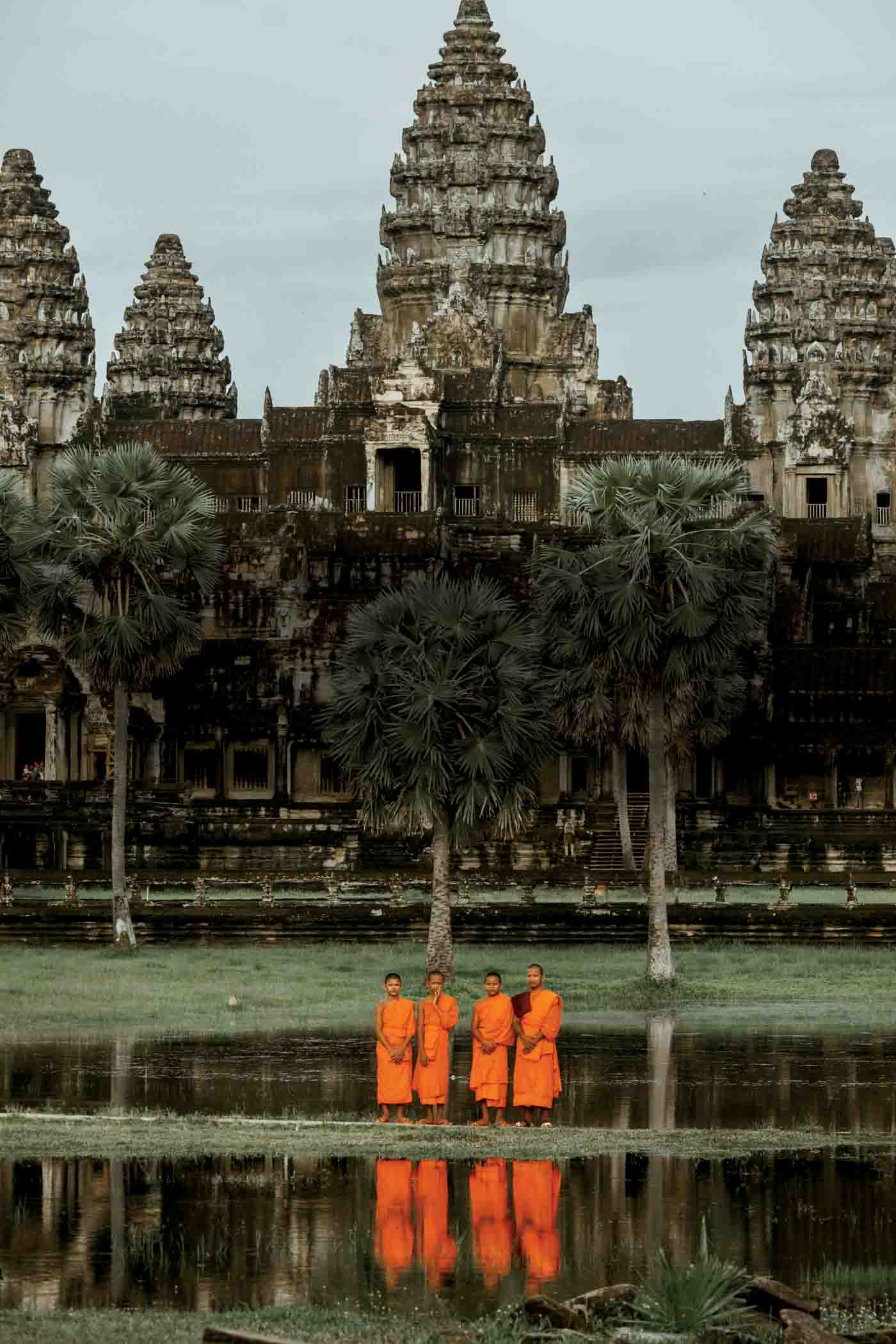
The grandeur of the Khmer civilization was largely forgotten until the 1840s when French explorer Henri Mouhot rediscovered Angkor Wat, the largest of the temples, and reintroduced its splendor to the world. Last May, I returned to Siem Reap for the first time since 2019 eager to introduce my daughter to the influences of this civilization and its many treasures.
I was immediately struck by how much the city had changed. We landed at the brand new, ultra-modern Siem Reap Angkor International Airport, outfitted with fashionable boutiques and trendy cafes and drove through the city on wide, pristine streets—a stark contrast to my previous experience. During my last visit, it wasn’t uncommon to see families of four on a single bike, including babies, without any safety gear whatsoever. To my relief, all motorcyclists were now donning helmets, a detail that brought me peace of mind given my tendency to foretell a myriad of mishaps.
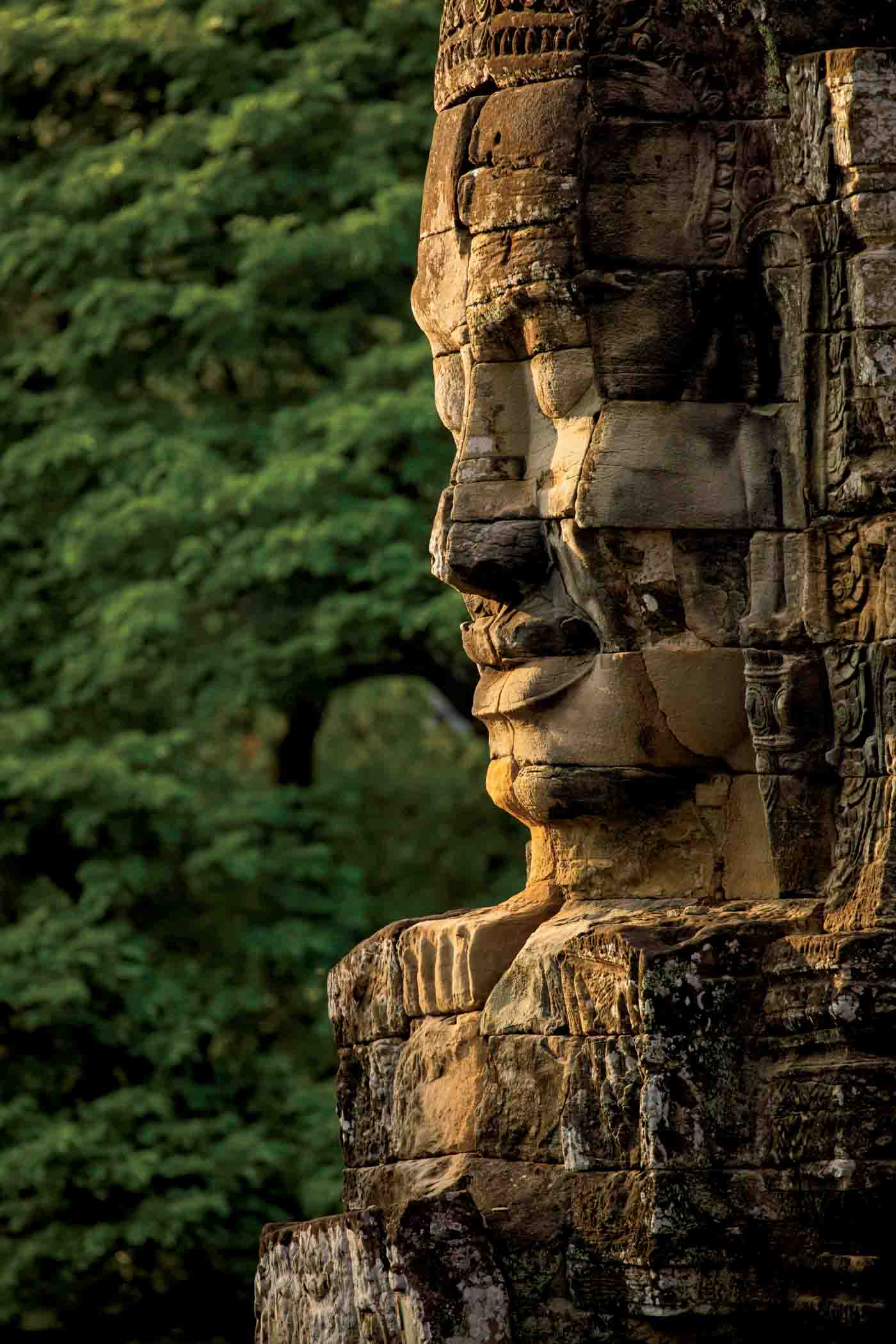
We chose the Anantara Angkor Resort as our home base. This beautiful boutique hotel, built in 2008, expertly weaves ancient Khmer elements into its architecture, customs, and cuisine. Architectural similarities to Angkor Wat are evident everywhere from the corridor design to the traditional wall carvings. Upon arrival, we were introduced to Khmer culture with a gift of the traditional handmade Cambodian krama—a bright, lightweight cotton scarf with centuries-old origins. Before check-in, the staff invited us to participate in a foot cleansing ritual believed to bring luck.
With refreshed feet and krama-draped necks, we ascended a private staircase to our second-floor suite. Named in honor of the hotel’s muse, the Sothea Suite boasts two bathrooms, a foyer, two patios, a spacious living/sleeping area, and a spa room complete with two baths and spa beds. Anantara’s signature welcome gesture adorned the bed—a display of rose petals and palm fronds spelling “Welcome to Anantara Angkor.” Flanking this message were two “elephants” fashioned from bath towels whose trunk tips and toenails were accented with rose petals.
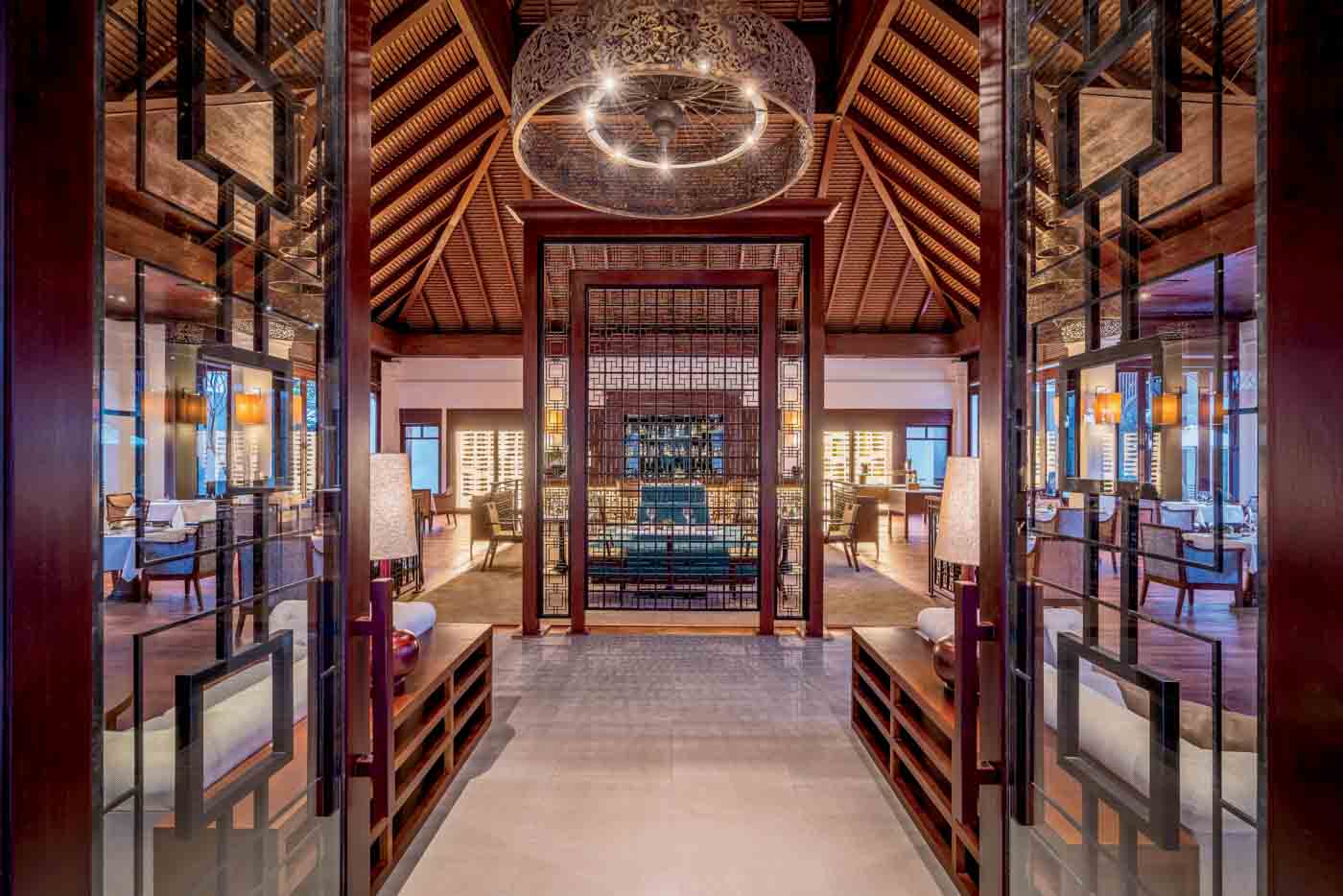
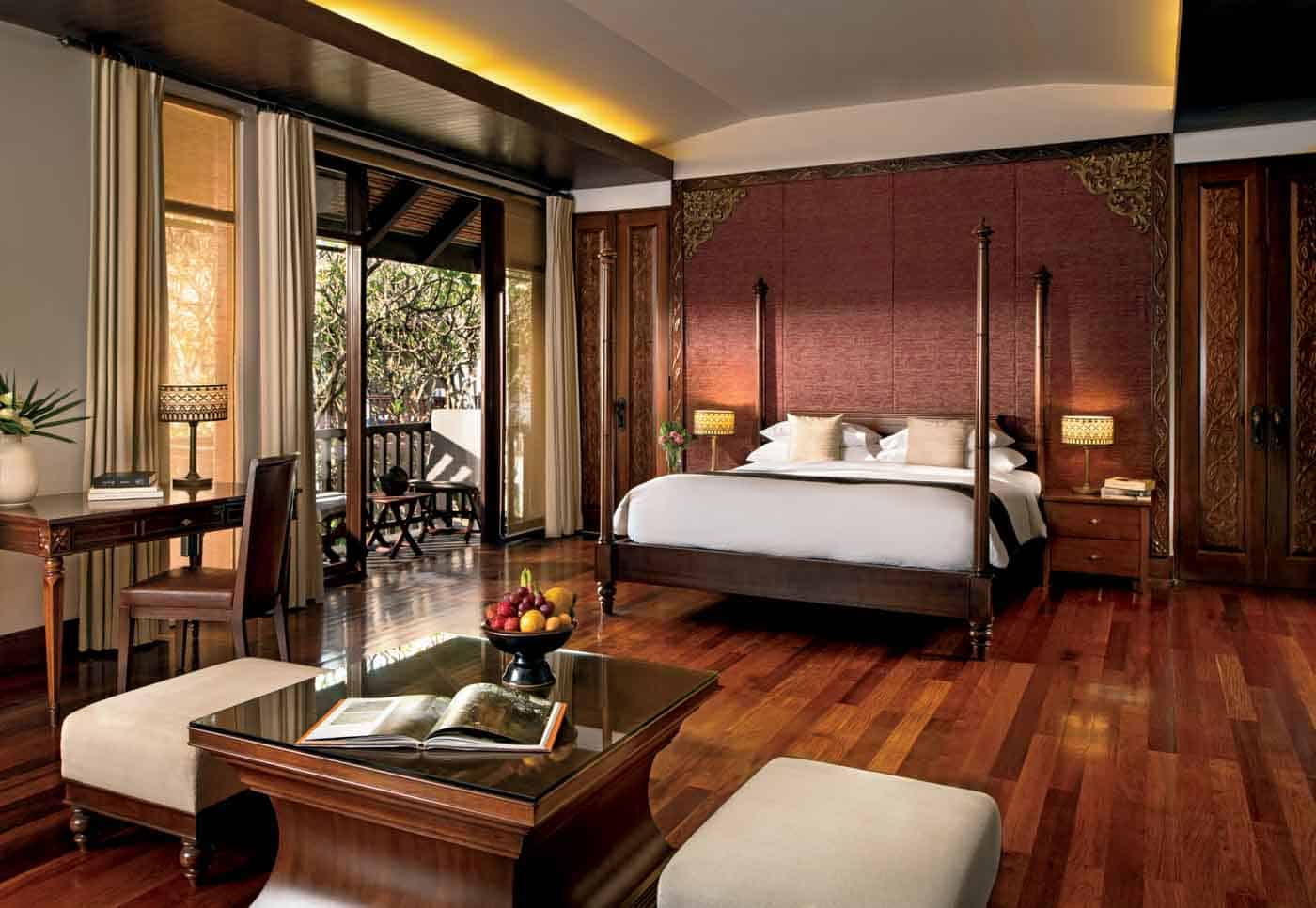
All suites overlook an open-air courtyard featuring a blue-tiled saltwater pool. Surrounded by lush greenery, the pool is crowned with an immense mother and child sculpture—a sweet symbol of our mother/daughter trip. Delicate blossoms from the peacock trees so perfectly dotted the courtyard’s walkway to the lobby that I was sure someone had meticulously placed each flower.
We enjoyed many meals at Chi Restaurant, situated at the center of the resort. Chi specializes in innovative Khmer cuisine celebrated for its aromatic ingredients and vivid colors. Named after the Khmer word for “herb,” the restaurant integrates local herbs and spices sourced from the chef ’s rooftop garden into each beautifully crafted dish.
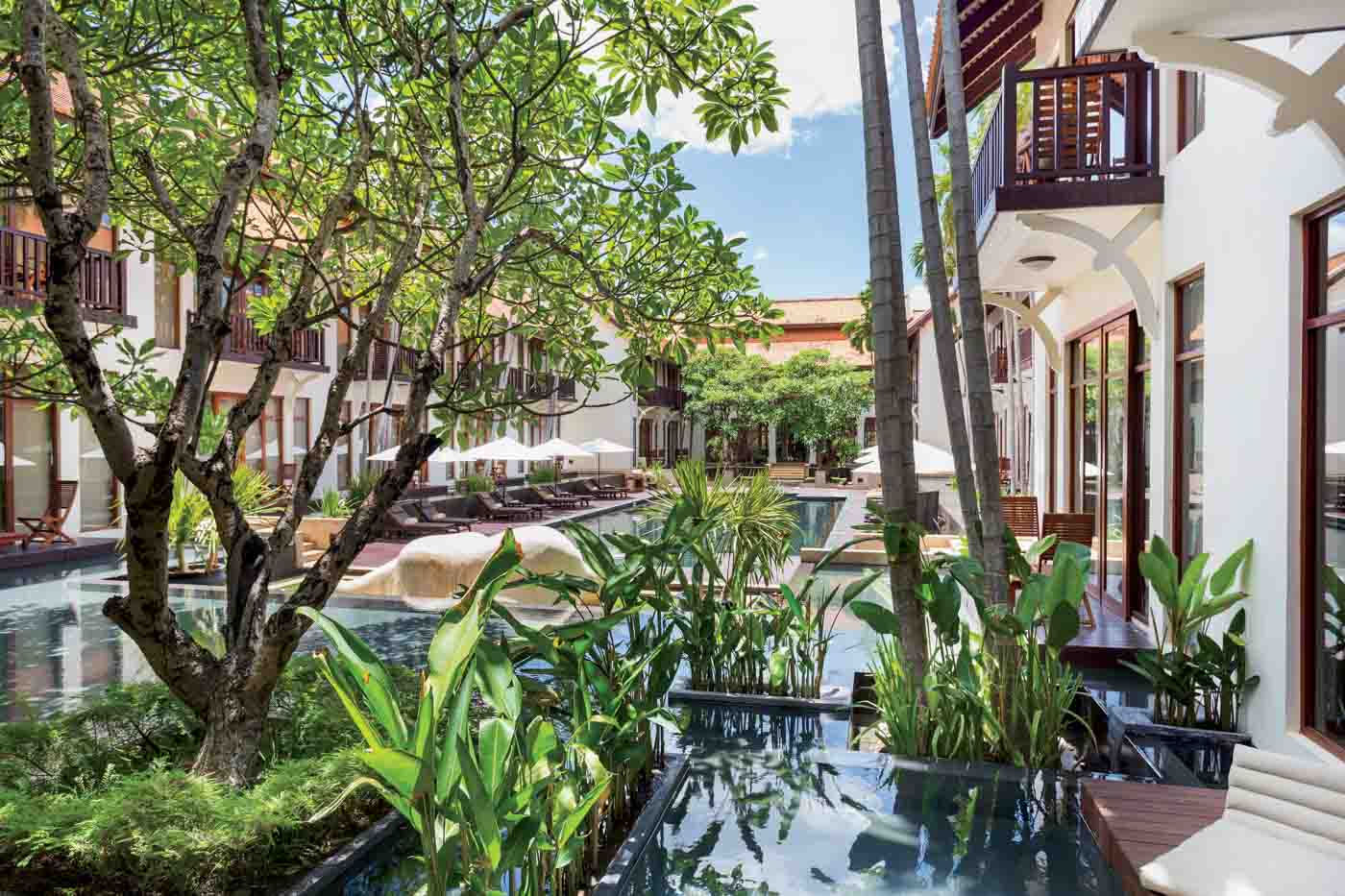
The dining room, adorned with dark wood and plush seating, is vast, yet cozy. The brass chandelier design is inspired by umbrellas, which offered divine protection to royalty and were often intricately carved on temple walls. As we enjoyed our meals, we felt divinely protected, overlooking an expanse of green encircled by a moat—another homage to Khmer temple architecture.
Although the hotel is open-air, inside the resort’s walls the sounds of the city disappeared and it was quiet except for the whisper of Cambodian music.
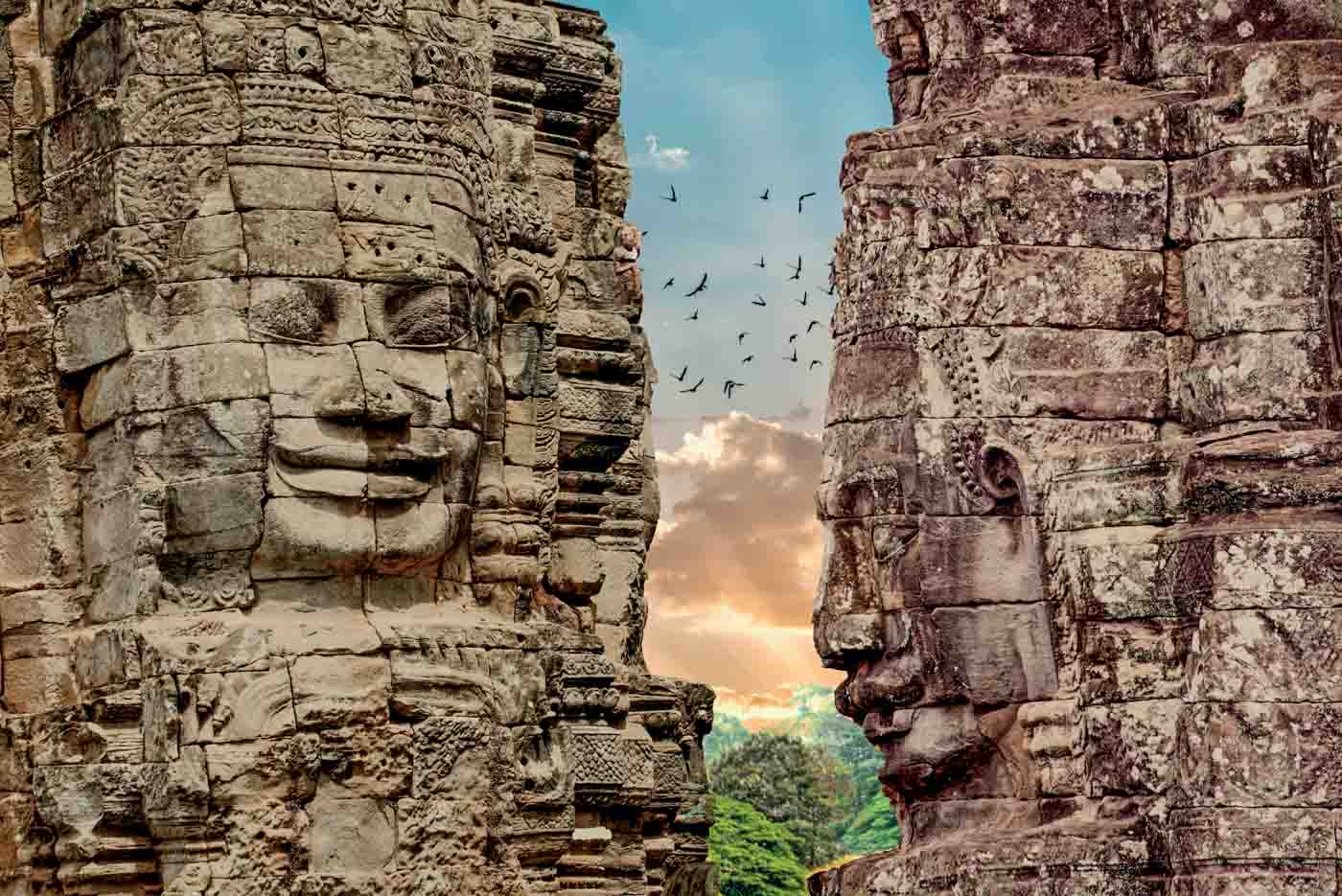
Temples The concierge booked a local guru to guide us through the temples and share scholarly insight. Our journey began at Angkor Wat, the largest of the many Khmer temples, shrouded by a dense jungle in the heart of Siem Reap. Built over 40 years by 50,000 laborers with the help of thousands of elephants and constructed with more stone than all the Egyptian pyramids combined, this temple is a wonder to behold. Believed to be the world’s largest religious structure and a designated UNESCO World Heritage Site, the entire complex is designed as a microcosm of the Hindu universe. Rising from the top of an enormous, terraced temple are five lotus bud towers symbolizing the peaks of Mount Meru (the dwelling place of the gods in Hindu mythology). The moat encircling the temple represents the mythical oceans surrounding the earth, and the temple’s concentric galleries represent the mountain ranges surrounding Mount Meru. Intricate bas-relief sculptures cover the walls depicting epic battles, royal ceremonies, and scenes of daily life. The artistry and craftsmanship are a testament to the ingenuity and majesty of the Khmer civilization.

I recommend visiting before sunrise so you don’t miss the moment when dawn’s first light breaks to reveal Angkor Wat’s silhouette against the sky’s pastel colors. As the sun climbed higher, stone corridors were slightly illuminated, revealing a labyrinthine of cool, shadowed hallways and sunlit courtyards.
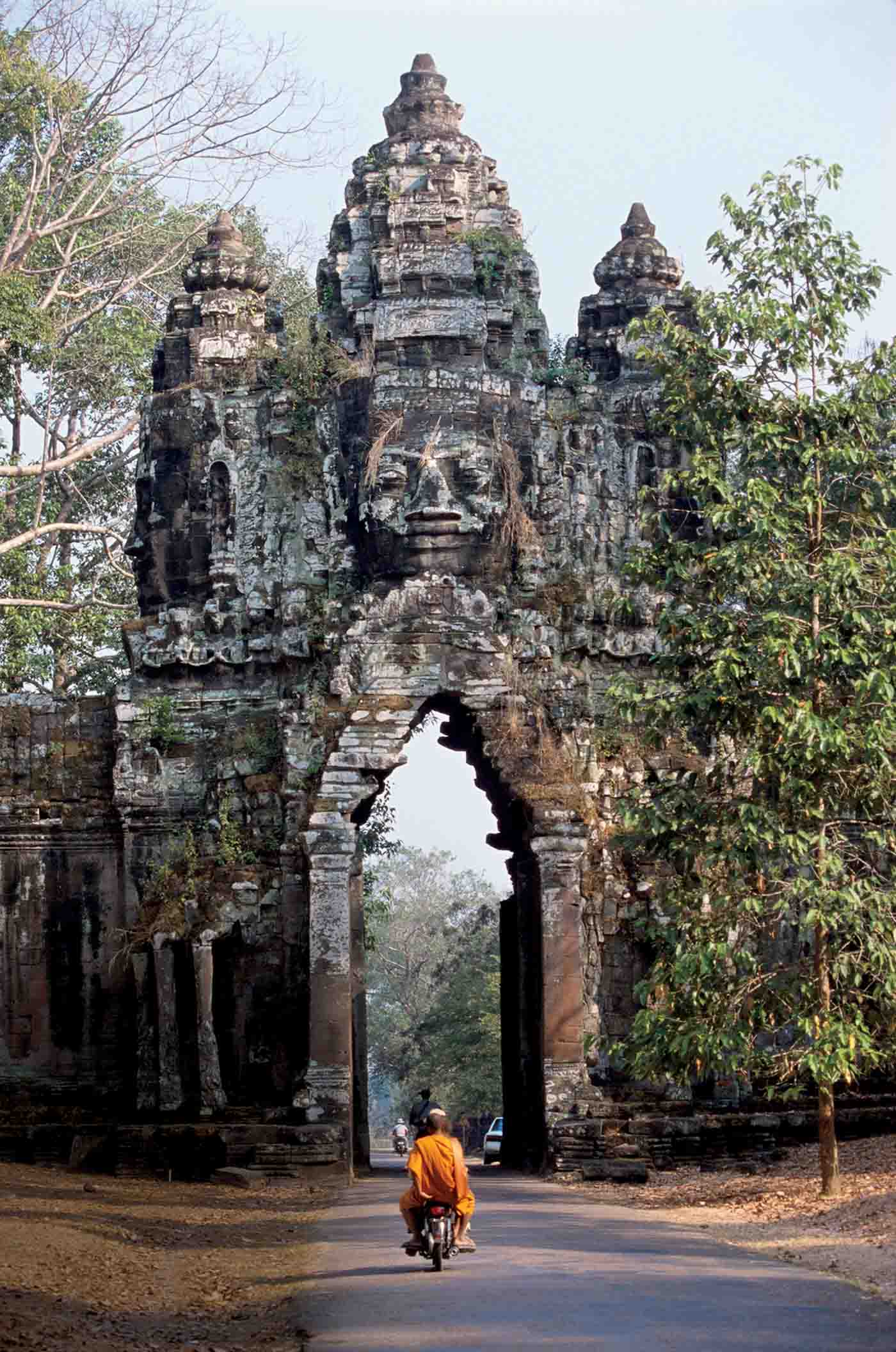
Inside the temple, monks’ chants and a faint aroma of incense fill the air enhancing the sense of spirituality. Make sure to experience a monk’s blessing—it is customary for the monk to sprinkle water during the blessing, but the experience is well worth a bit of dampness. A small donation is suggested.
En route to the second temple, Bayon Temple, we passed one of my favorite sights—the 54 stone Demon Gods outside Angkor Thom South Gate. Walk up the hill behind the enormous gate to capture a gorgeous photograph of these huge stone faces.
Bayon Temple’s towering walls hold 200 immense faces that gaze out over the city. Monkeys adore Bayon and run around the grounds adding a bit of chattering gaiety to the experience.
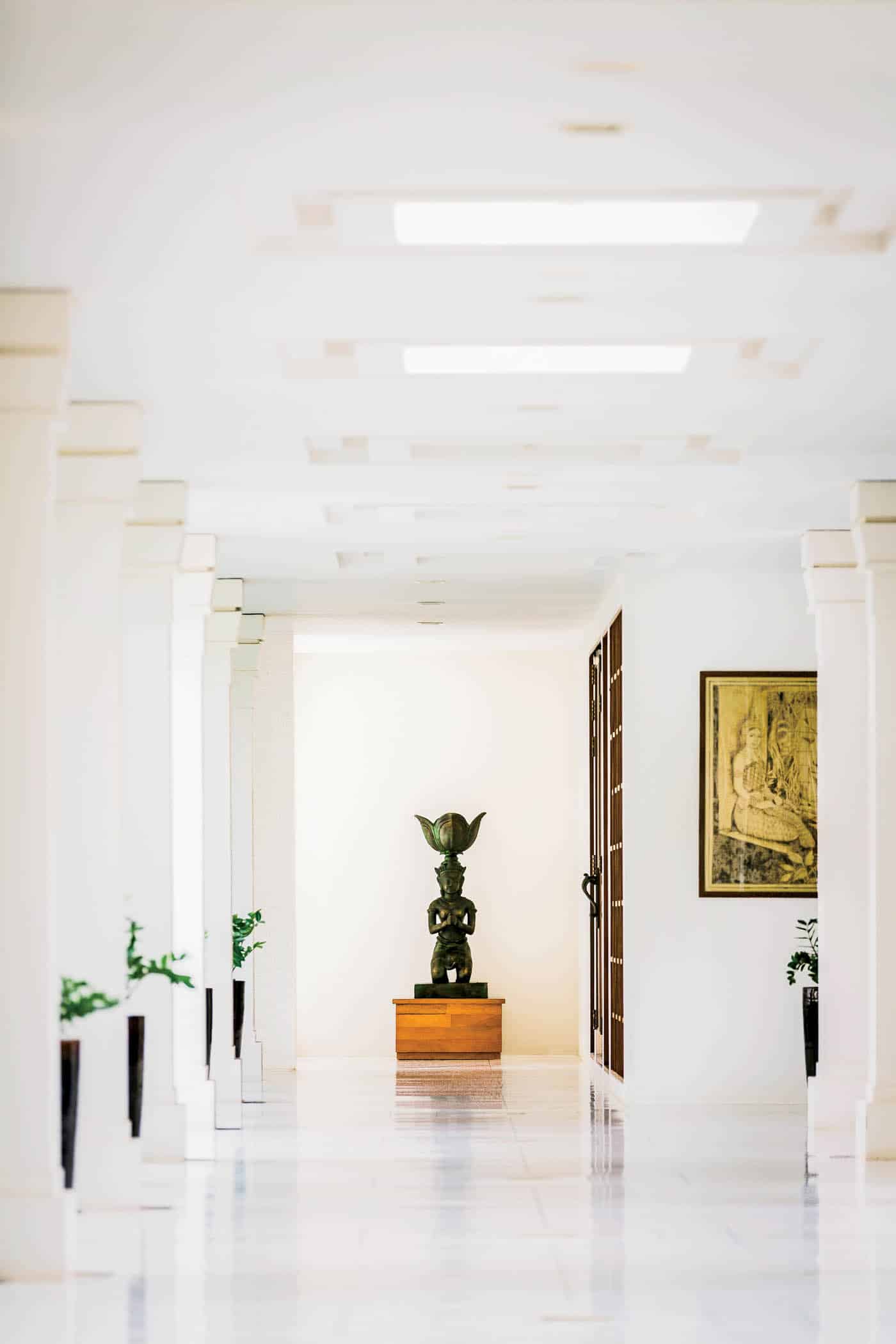
At our final temple, Ta Prohm, we observed an ancient dance with nature that created a mysterious atmosphere attracting tourists in droves. Originally established by a Khmer king as a Buddhist monastery and university, today gnarled tree roots seem to hold the ancient stones together while simultaneously tearing them apart. With their massive trunks and sprawling roots, the trees appear to devour this once magnificent structure signaling nature’s inevitable triumph.
While these temples offer beauty in their grand scale and intricate details, they also inspire a sense of peace and contemplation. As I wandered through each one, I felt a deep connection to the past and a profound respect for the artisans.
As we visited in May temperatures were in the triple digits, so we opted out of the temple run or biking adventures. Guests may jog through the temples with a tuk-tuk (a three-wheeled motorized taxi) nearby in case the heat cuts the journey short, or bike along the top of the temple walls. Both adventures are on my list for next time.

One day, we hopped in the resort’s tuk-tuk and our driver whisked us around the city. We explored the Royal Palace, visited shops, strolled through street markets, and even ventured to the famous Pub Street, where we ran into a friend from our flight. I appreciated the convenience of the resort’s tuk-tuk service—it removed my worry about the language barrier and currency conversion (I charged it to our room).
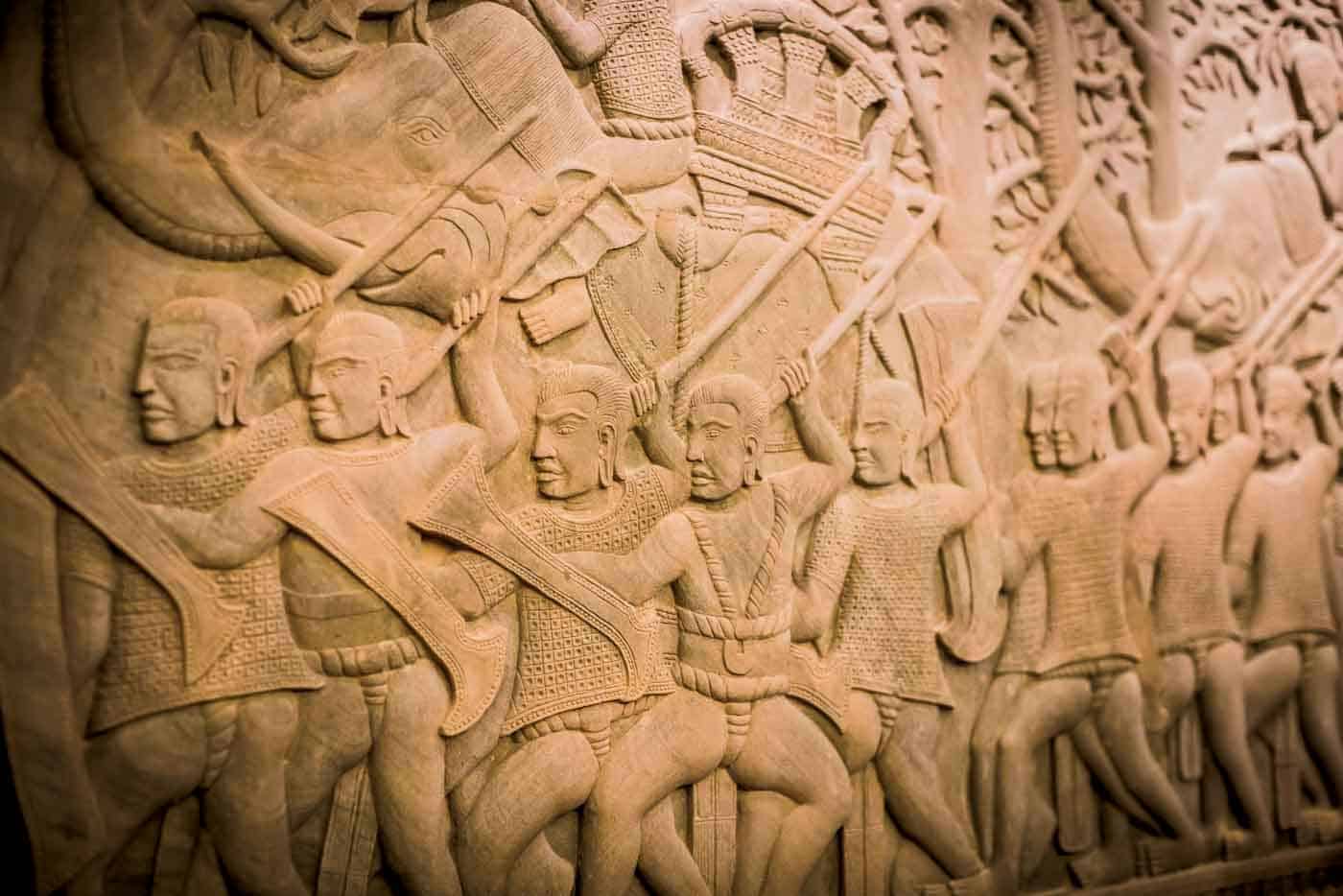
After all the sightseeing, make sure to schedule a spa appointment for a well-deserved dose of relaxation. The spa is an oasis of calm where you feel a relaxation of body, mind, and spirit—even before the treatment. We opted for the Khmer massage, an ancestor of Thai massage, originally designed to rejuvenate monks following extended periods of meditation. This unique massage technique eschews oils, instead relying on the body’s natural moisturizing abilities, and enhances flexibility, energy flow, and circulation.
A trip to Cambodia offers a spiritual journey and an immersion in the country’s ancient history, art, and culture. Don’t hesitate to undertake this unforgettable sojourn.
For more information, visit anantara.com.
Sign Up for the JWC Media Email